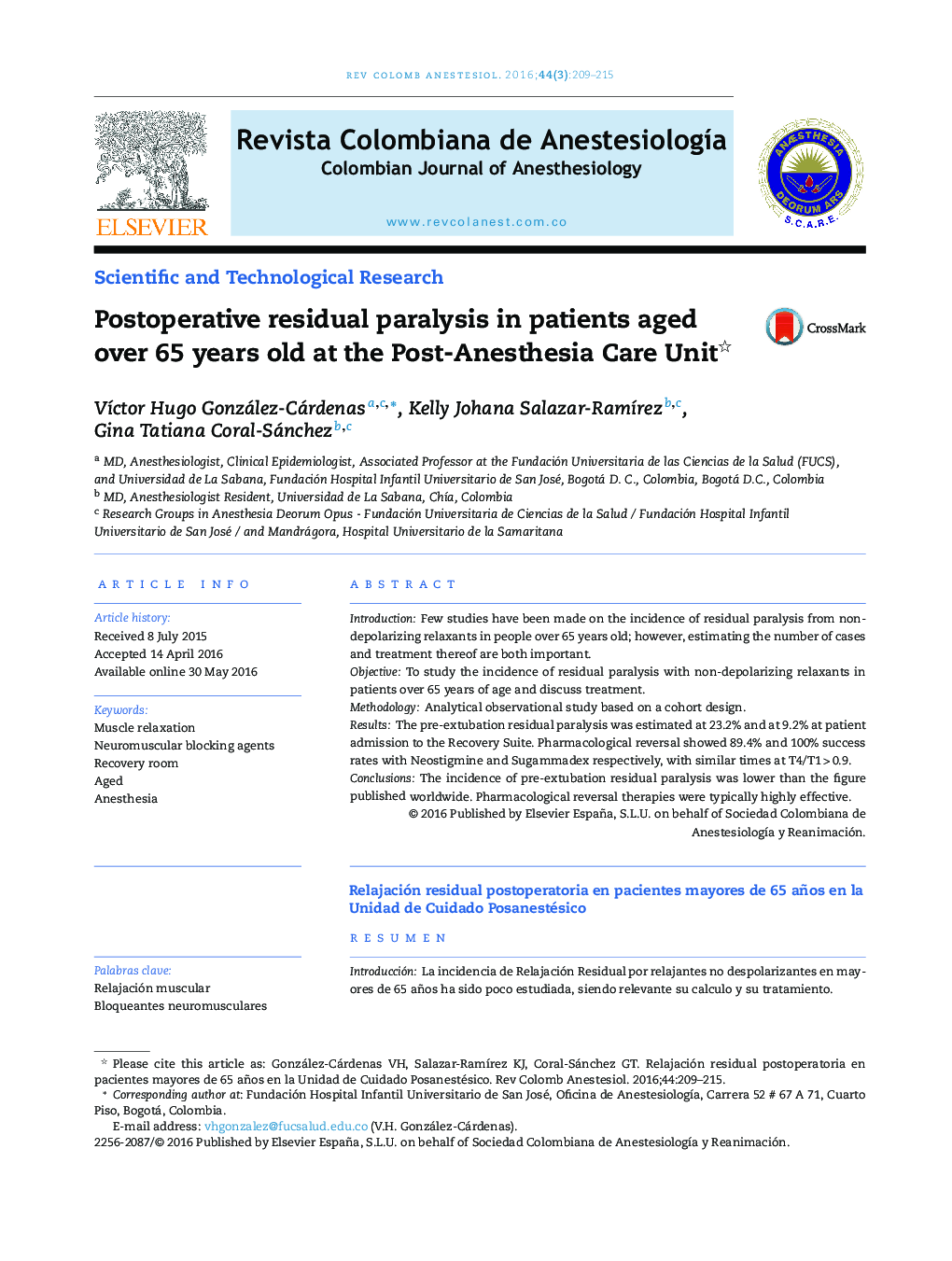| Article ID | Journal | Published Year | Pages | File Type |
|---|---|---|---|---|
| 2755744 | Colombian Journal of Anesthesiology | 2016 | 7 Pages |
IntroductionFew studies have been made on the incidence of residual paralysis from non-depolarizing relaxants in people over 65 years old; however, estimating the number of cases and treatment thereof are both important.ObjectiveTo study the incidence of residual paralysis with non-depolarizing relaxants in patients over 65 years of age and discuss treatment.MethodologyAnalytical observational study based on a cohort design.ResultsThe pre-extubation residual paralysis was estimated at 23.2% and at 9.2% at patient admission to the Recovery Suite. Pharmacological reversal showed 89.4% and 100% success rates with Neostigmine and Sugammadex respectively, with similar times at T4/T1 > 0.9.ConclusionsThe incidence of pre-extubation residual paralysis was lower than the figure published worldwide. Pharmacological reversal therapies were typically highly effective.
ResumenIntroducciónLa incidencia de Relajación Residual por relajantes no despolarizantes en mayores de 65 años ha sido poco estudiada, siendo relevante su calculo y su tratamiento.ObjetivoEstudiar la incidencia de Relajación residual en pacientes mayores de 65 años con relajantes neuromusculares no despolarizantes y describir su tratamiento.MetodologíaEstudio Observacional Analítico con Diseño de Cohorte.ResultadosLa Relajación Residual pre-extubación fue del 23.2% y al ingreso a la Sala de Recuperación del 9.2%. La reversión farmacológica con Neostigmina exhibió un éxito del 89.4% y con Sugammadex del 100%, con similares tiempos a una T4/T1 > 0.9.ConclusionesLas incidencias de Relajación Residual pre-extubación y en la Sala de Recuperación fueron mas bajas que las publicadas a nivel mundial. Las terapias de reversión farmacológica se distinguieron por su alta eficacia.
